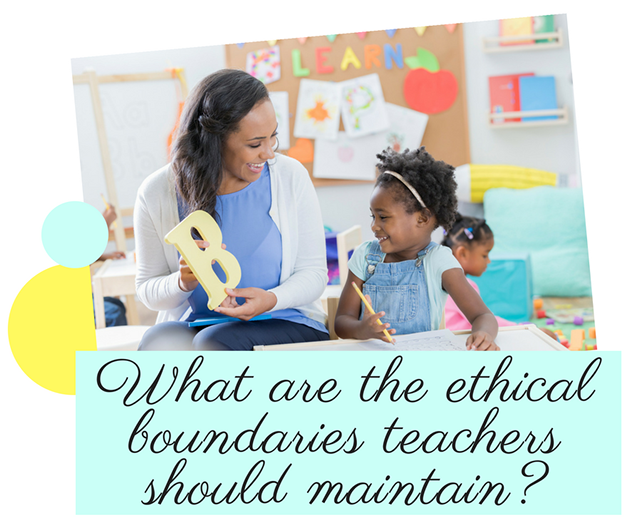5 Crucial Boundaries Teachers Must Maintain in Classrooms
Posted by Network Support · Leave a Comment
5 Crucial Boundaries Teachers Must Maintain in Classrooms
Good student-teacher relationships are essential for positive classrooms. Student-teacher relationships, however, can be complex. Teachers are in a position of authority and can use their position to care for, gain the trust of and influence students. This same position, if misused, can compromise students’ safety and bring about grave consequences for teachers. In order to ensure student safety and to build positive environments, it is important for teachers to establish and maintain these five professional boundaries in their classrooms:
Emotional Boundaries: Teachers must not let emotions influence their behaviors and attitudes towards students. Establishing emotional boundaries helps teachers to:
- Consider all students equal.
- Refrain from giving preferential treatment to specific students.
- Prevent personal problems from influencing and interfering with professional duties.
- Develop emotional independence among students.
Relationship Boundaries: These boundaries help to keep teacher-student relationships purely professional – meaning teachers are not “friends” with their students. Relationship boundaries prevent teachers from:
- Forming personal and/or inappropriate relationships with students.
- Contacting or arranging meetings with students without informing parents. This includes meeting students in public spaces, driving students home, or extending one-on-one sessions at school beyond permissible school hours.
- Integrating themselves into students’ lives and that of their families on a personal basis.
Power Boundaries: Teachers are responsible for the welfare of students. This includes ensuring that they do not misuse their position of power and authority to cause harm to students by:
- Rewarding or punishing students inappropriately, without proper basis or based on their personal grudges.
- Using students for personal benefits.
- Bribing, manipulating, humiliating or threatening students.
- Failing to respond to students’ claims of bullying or abuse in a timely manner.
- Not reporting of students who are behaving inappropriately with teachers.
Communication Boundaries: As channels for communication increase, the need for boundaries also increases. Teachers must strive to keep all communication transparent. Some communication boundaries that must be maintained include:
- Avoiding sharing and/or requesting for personal information, pictures and videos from students.
- Giving clear instructions when students can contact (time and days) teachers.
- Engaging in personal communication (text, online) with students.
- Informing parents of all communication with students.
- Avoiding addressing students with pet names or terms of endearment.
Physical Boundaries: Although “touching” is inevitable in the profession, teachers must:
- Refrain from touching or students inappropriately such as stroking, tickling or hugging them.
- Respect proximity and physical space when interacting with students.
- Give students privacy in restrooms, locker rooms and dressing areas.
Even with clear boundaries in place, there can be instances in which the correct behavior for a teacher is not obvious. Above all, it is important for teachers to stick to the boundary basics and use their judgement case by case when necessary.
Like this article for teachers?
Browse the Professional Learning Board COURSE CATALOG to find related online courses for teachers in your state. Professional Learning Board is a leading provider of online professional development classes that teachers use to renew a teaching license or renew a teaching certificate.





